Recently my boyfriend and I were walking along the racks in a hypermarket and I thought that it was a good chance to tell some interesting facts about Russian food shopping.
First of all, the name “hypermarket” (I think many people are familiar with this word) means a really big grocery store where you can find not only food, but also a lot of inedible goods such as detergents, kitchen utensils, household appliances, and many other things.
Today there are only few hypermarkets in our city (about 6-8) but they gradually become more popular because of wide choice of goods and more bargain price. We prefer to buy food and other related products twice a month here rather than spend much more money and time buying goods at the nearest stores.
As for the food, Russians like home-made goods including different kinds of preserves, canned vegetables, bottled mushrooms, etc. Ten years ago my mother prepared such goods herself (and even today she does), but time changes and as for me and other young people — now we are not ready to spend time cutting a great number of marrows and mushrooms and putting them into hundreds of bottles.
Producers understood which way the wind blows and launched production of preserves and tinned goods. Here you may see the result: tinned fruits, vegetables, mushrooms, pickled food! Yummy!
Vegetable marrow paste. Delicious! :)
A new tendency in our supermarkets is exotic fruits. A lot of Russian people at least once have visited Thailand or other Asian countries, where they tasted such delicious fruits as mango, coconut, dragon fruit and others, and they are glad to find such fruits in Russian supermarkets.
The item on the photo below is pelmeni packing device О_о
If somebody doesn’t know, this dish looks like small pieces of ground meat covered by dough. Pelmeni are considered a traditional Russian dish.
Tell the truth we’ve seen such device for the first time, it was quite strange and there wasn’t any manual “how to use… “, or instructions like “push this button to…”, “blah-blah-blah”, so we didn’t managed to get pelmeni out of it :) Maybe pelmeni were finished.
Frozen vegetables. Nothing special, but broccoli looks terrible.
Pelmeni again! Russians love pelmeni! %) But they also look terrible. We have a supposition that these ones have been preserved here for years.
Vareniky look better ;) This dish is almost the same as pelmeni, but the filling differs. Instead of meat it may consist of vegetables, mushrooms, berries. This dish belongs to Ukrainian cuisine.
Refrigerated meat (usually beef, pork, chicken, sometimes turkey).
Different kinds of sausages including boiled and smoked.
Strong drinks (champagne, wine, Martini, vodka, tequila, maybe something else).
Vodka is the most popular drink in Russia. After tea.
It was a joke, I hope %) But one our friend who keeps a shop in Novosibirsk told us that alcohol sale makes up 40% of the profit.
Vegetables.
Soft drinks: kvass. It’s also a very popular drink in Russia, especially in summer. I’m not sure if it’s considered a soft drink or a strong one, because it has alcohol content, but very low (max. 1.2%).
Juices.
This time our shopping list consisted of these goods:
- Carbonated soft drinks: lemonade and krem–soda = $1 per 0.5l bottle;
- Condensed milk =$1.75 per tin (for preparing cocoa, and as filling for Russian pancakes – bliny);
- Canned fish ~ $1 per tin (I don’t know why, but my boyfriend can’t live without it);
- Sugar = $0.95 per kg;
- Cabbage-head = $0.85 per kg (to stew with meat and other vegetables, or to prepare soups like Borscht)
- Rice = $1.45 per 800g package (to prepare plov/pilaf, rice porridge made with milk for breakfast, or thailand dish called “fried rice with chicken” – khao pad gai);
- Eggs ($1.30 per 10 eggs) — traditionally for omelette, fried eggs, different salads, Russian pancakes and other pastry;
- Bananas – I love bananas! :) $1.6 per kg;
- Tomatoes = $5 per kg;
- Pepper = $4.30 per kg;
- Garlic = $2.65 per kg;
- Pasta = $1 per 400g package;
- Marshmallow in chocolate = $4 per kg;
- Dried prune = $1.45 per 300g package (I use it to prepare meat sauce);
- Sausages = $7.4 per kg;
- Oatmeal cookies = $1.15 per 500g package;
- Chocolate sweets = $1.4 per 250g package;
- Ketchup = $0.9 per 500g package (ketchup and mayonnaise I also use only to prepare sauces);
- Mayonnaise = $0.73 per 250g package;
- Sour cream, or smetana ($1.10 per 350g package), fermented milk drinks called Kefir ($1.20 per 1l bottle) and Snezhok ($0.85 per per 500g carton), which are very healthful and tasty;
- Different juices ~ $1.6 per 1l carton;
- Tea – black, green and red = $1.75 per 25 bag/pkg;
- Peppermint cakes = $0.86 per 450g package;
- Spring onions = $0.95 per 100g;
- Chicken fillet (for cutlets, stew and other dishes) = $6.27 per kg;
- Lemons = $2.55 per kg;
- Beef (bone steak for Borscht!) = $7.87 per kg.
Total bill for everything is $78.6
But anyway we regularly go to the nearest stores to buy some additional goods, for exemple perishable products, vegetables and fruits when they are finished. So, finally expanses increase to ~ $100-110 per fortnight.
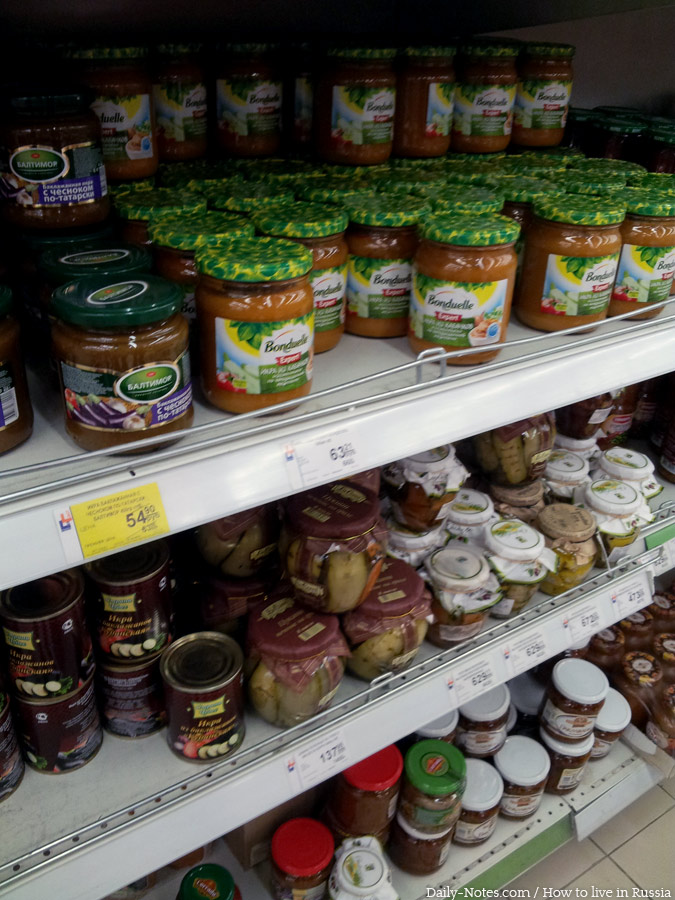
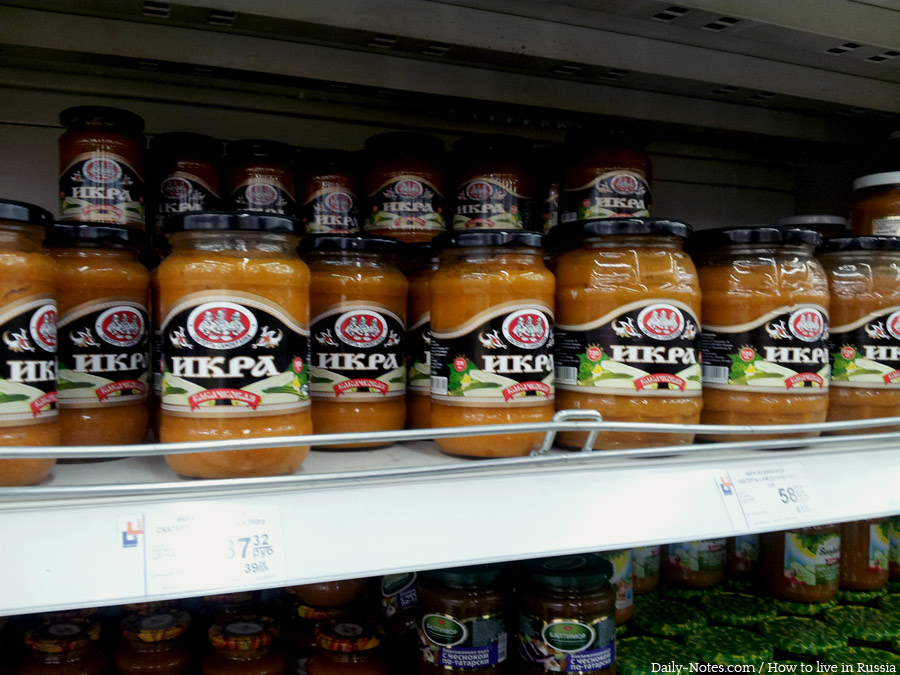
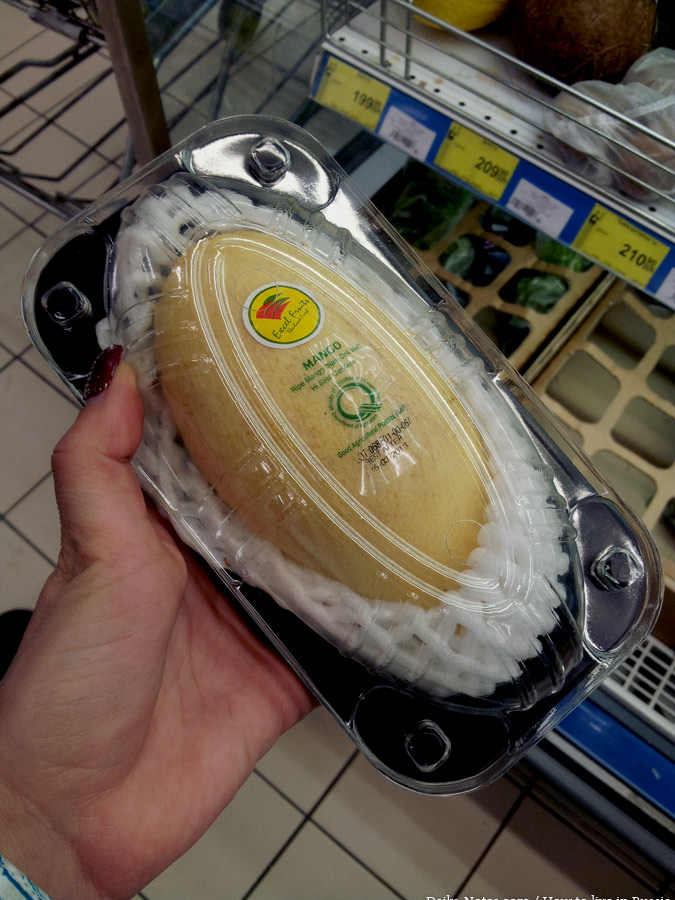
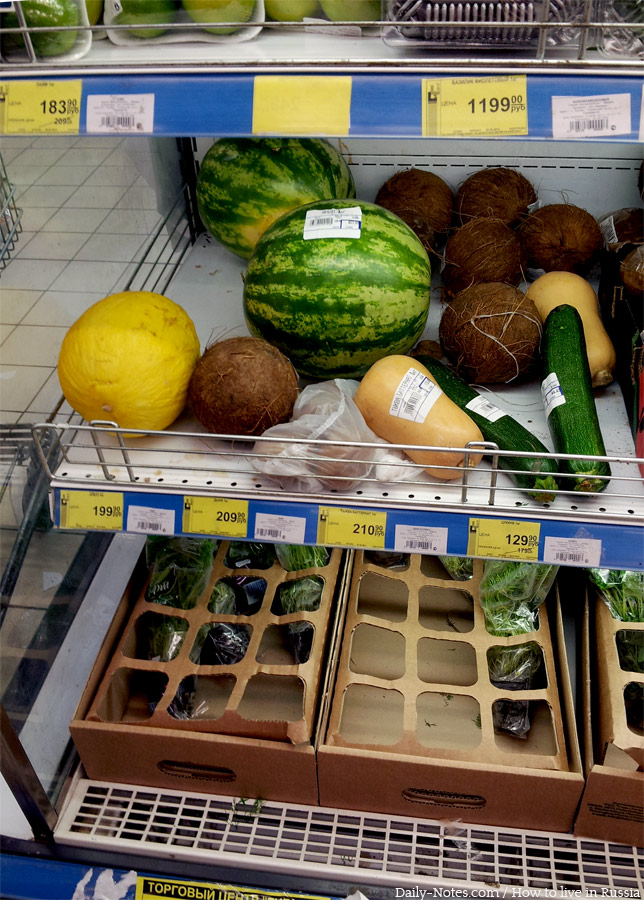




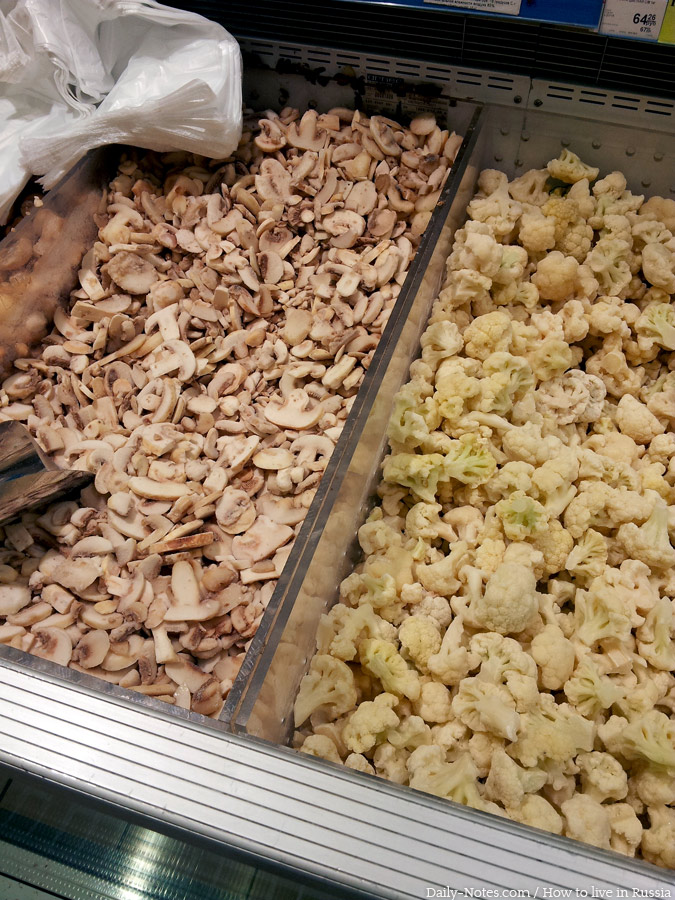



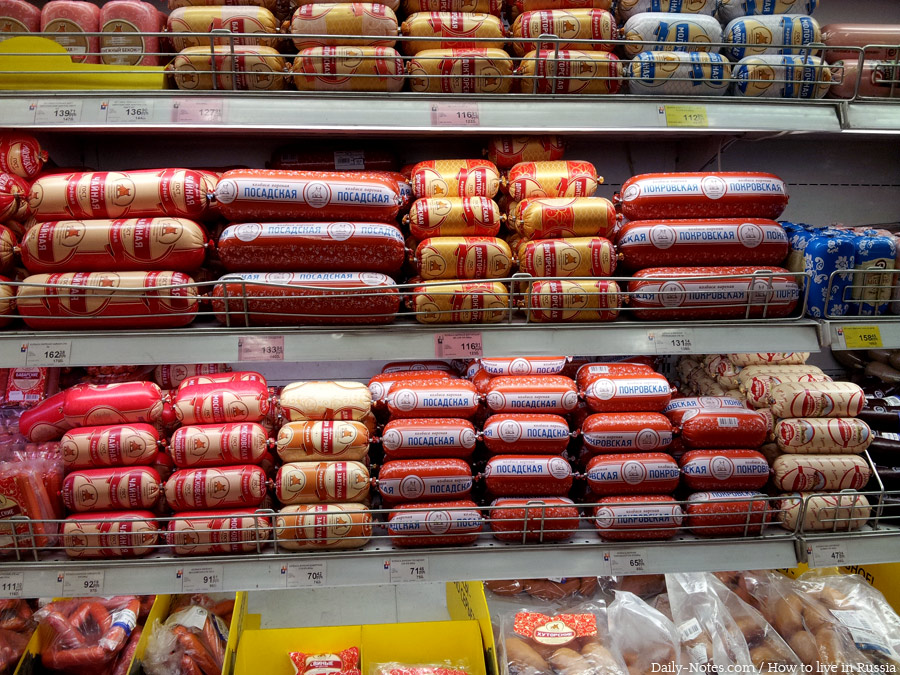
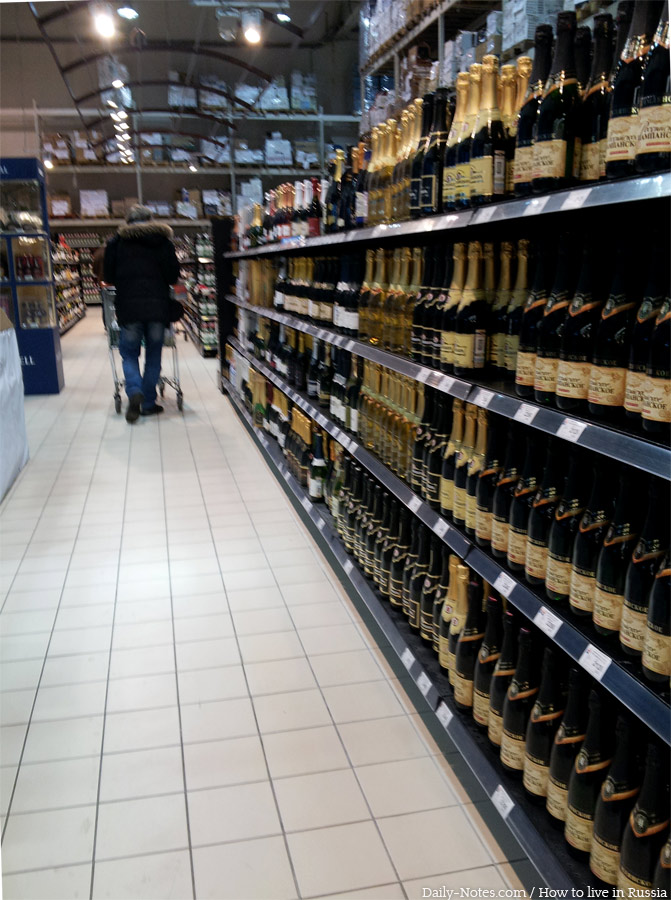

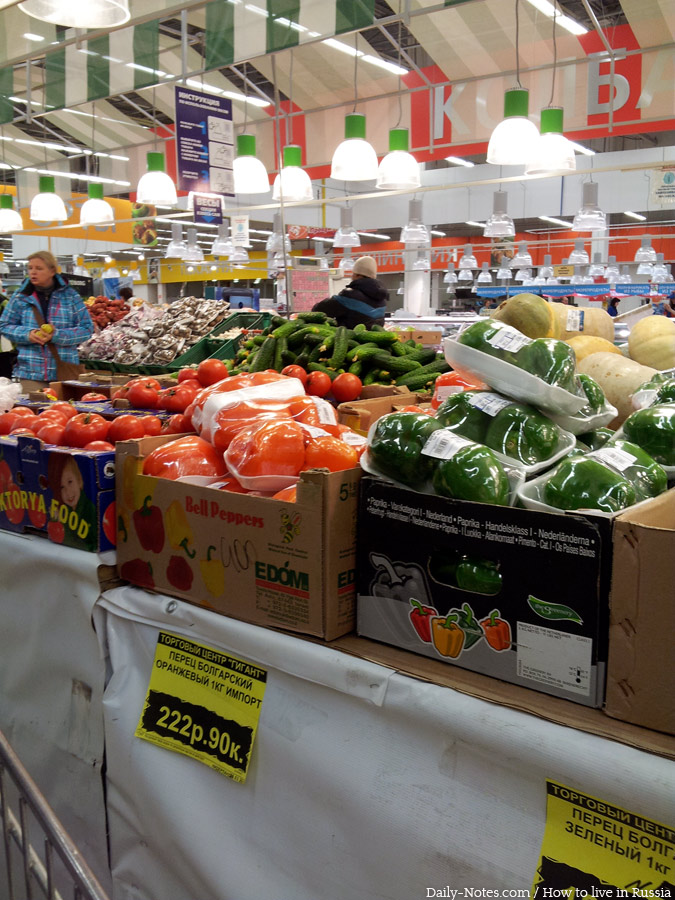
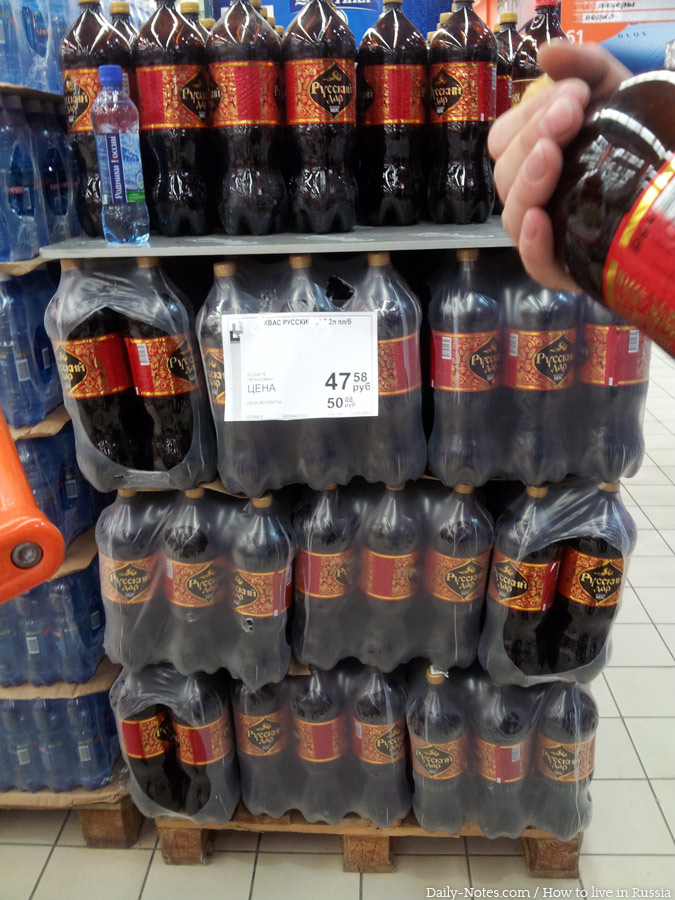
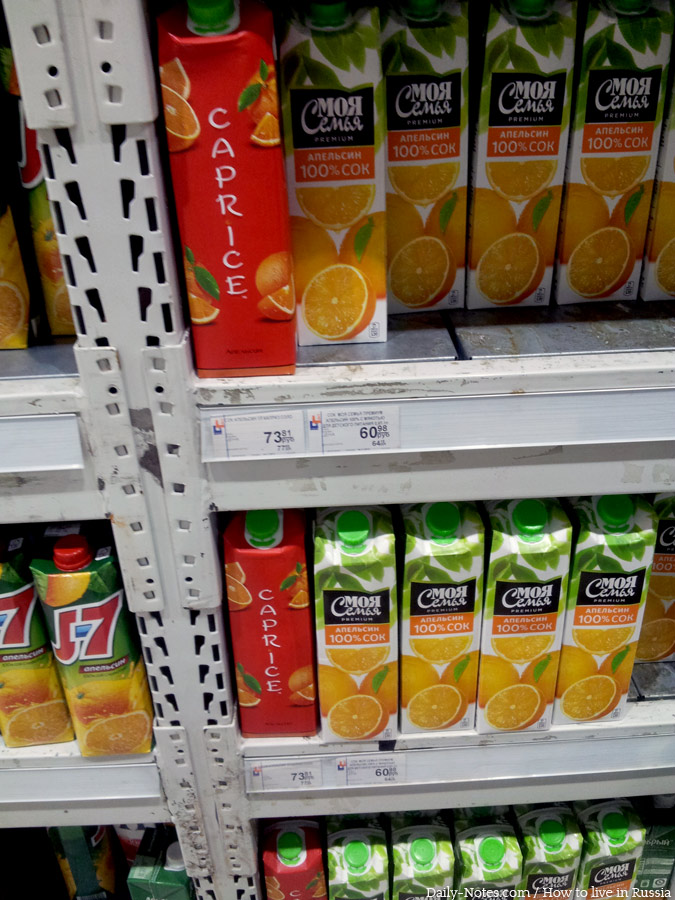



> Almost every Russian at least once has visited Thailand or other Asian countries where he tasted such delicious fruits as mango, coconut, dragon fruit and others, and they are glad to find such fruits in Russian supermarkets.
It’s not quite correct. Accordingly to RosStat less than 20% of Russian citizens ever crossed the border of Russia.
And what about prices for all this stuff?
“В интернете кто-то неправ” ©
Roma, don’t take everything literally. Have you ever heard of so called vivid expressions such as hyperbole? You should know the Russian phrase “только ленивый не…” — it’s the same.
In addition Rosstat takes into account a great number of elderly people, children, and people who live in remote villages. Here I tell about urban working population cause I may judge only by this group of people. I think it’s logical.
So according to Rosstat this group of people amounts to 65 million people (the whole population is 145 million). Taking into account people who don’t work this number diminishes.
P.S. As for the prices I’ll add them later :)